The NZXT Manta mITX Case Review
by E. Fylladitakis on June 16, 2016 9:00 AM EST- Posted in
- Cases/Cooling/PSUs
- Mini ITX
- NZXT
- Case
The Interior of the NZXT Manta
NZXT used the same satin black paint as the exterior to spray the interior of the Manta as well. Everything in the case is black, including the stock cooling fans and their blades. An opening on the motherboard tray allows for the installation of aftermarket CPU coolers without having to remove the motherboard from the case. The opening looks small, but there should not be any compatibility problems with most Mini-ITX boards.
Openings for the routing of cables can be seen above and below the motherboard area. None of the openings have rubber grommets installed, which is strange for a case of this price range. The right side of the motherboard is essentially entirely open and covered by a metallic bridge installed above it. A non-removable metallic shield separates the system area from the PSU compartment.
Two metallic 2.5” drive trays can be found to the right side of the main system. Each tray is held by a thumbscrew and can be easily removed without the use of tools, but the device itself needs to be secured onto the tray using screws. The position of the trays also has the devices facing towards the front of the case, meaning that the stickers of some SSD drives will be upside down.
Two 120 mm intake fans can be found installed at the front of the case. 140 mm fans will also fit here, as will 240 mm and 280 mm long liquid cooling radiators. This is equally true for the top panel of the case, allowing the user to concurrently have two powerful liquid cooling systems installed. One 120 mm exhaust fan is installed at the rear of the case, the position of which can be vertically adjusted.
NZXT installed a simplistic but functional fan controller at the rear of the motherboard tray. The controller has seven headers, three of which are occupied by the stock cooling fans. It simply takes the PWM signal from one of the motherboard’s headers and uses it to control the speed of the fans connected to it.
One 3.5” drive can be installed on the back of the system area, behind the 2.5” drive trays. The 3.5” drive needs to be secured using screws and, to that end, the 2.5” drive trays need to come off. Another 3.5” device can be installed to the bottom of the case.
A small button at the rear of the case controls the lighting of the Manta. There are two lighted areas on the Manta. The first one is the white company logo on the front side of the PSU compartment and the second is the exterior of the motherboard’s I/O panel at the rear of the case. This is an interesting approach and can possibly be functional whenever someone wants to insert a cable in the dark. The switch has four settings: all on, logo on, rear panel on, all off. The system area is not in any way illuminated and LED fans or other light sources are virtually necessary to those who want to showcase their system.
For the means of this review, we installed a Corsair AX760i with the red cable set, for strong visual contrast. The AX760i easily fits inside the NZXT Manta, with enough room for managing the cables. The cables are also more than long enough for a typical system, as the Mini-ITX motherboard tray is significantly shorter than what the PSU has been designed for. There are numerous cable tie points that aid with the management of the cables and several openings that bring each cable near its intended connector. Our only concern lies with the metallic bridge to the right side of the motherboard, as it seems to be doing more harm than good, prohibiting the 24-pin cable from taking a proper turn and limiting access to the 2.5” device connectors. Although the clearance looks to be just OK from these pictures, it actually is massive when the extra couple of centimeters that the curved side panel adds are taken into account, which is how the 3.5” drive easily fits there are well.
The Mini-ITX system fits inside the system area of the Manta with ease, allowing the installation of large air coolers, liquid coolers and long/wide graphics cards. There is a long of space in front of the motherboard, allowing cards up to 420 mm long to the installed. However, note that the installation of a liquid cooling radiator at the front of the case will reduce this clearance. The CPU cooler’s maximum height is 160 mm, which is not great considering the massive width of the case. Several top tier air coolers will not fit into the Manta.


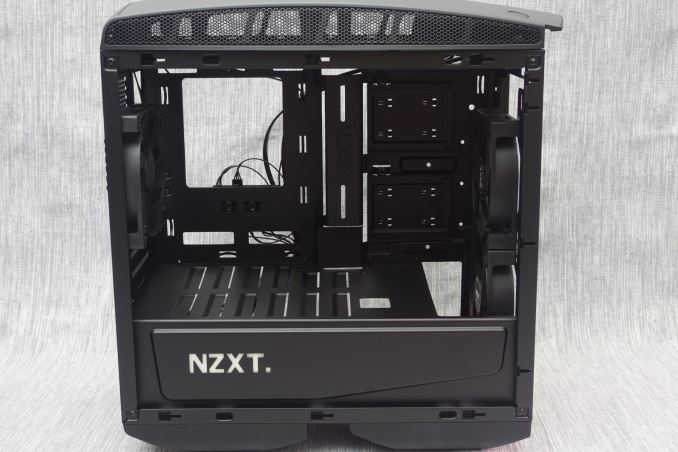
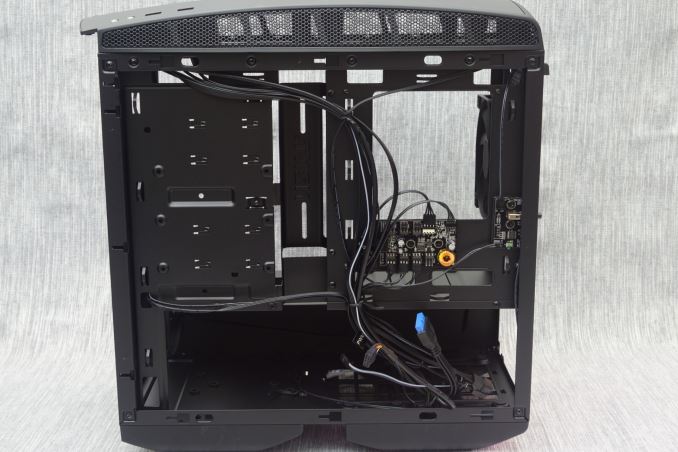
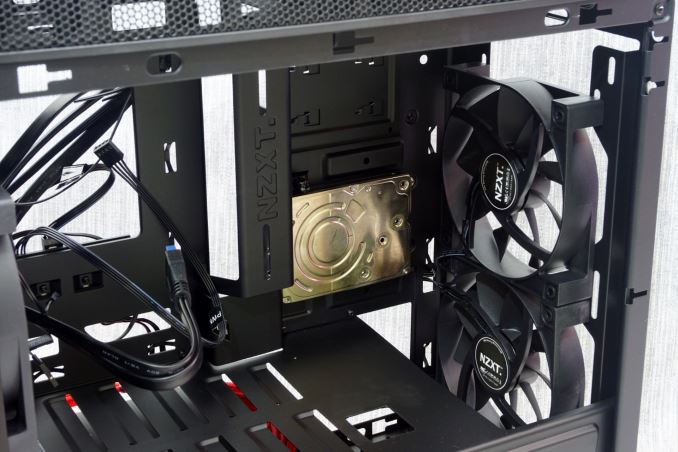
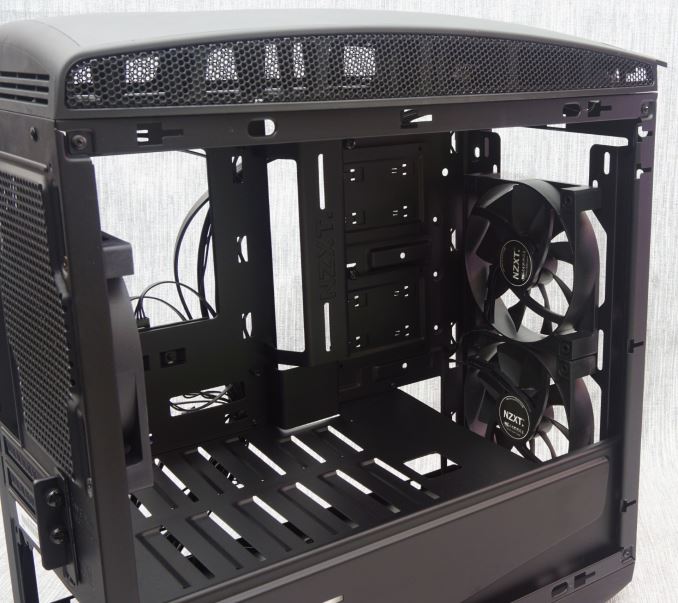
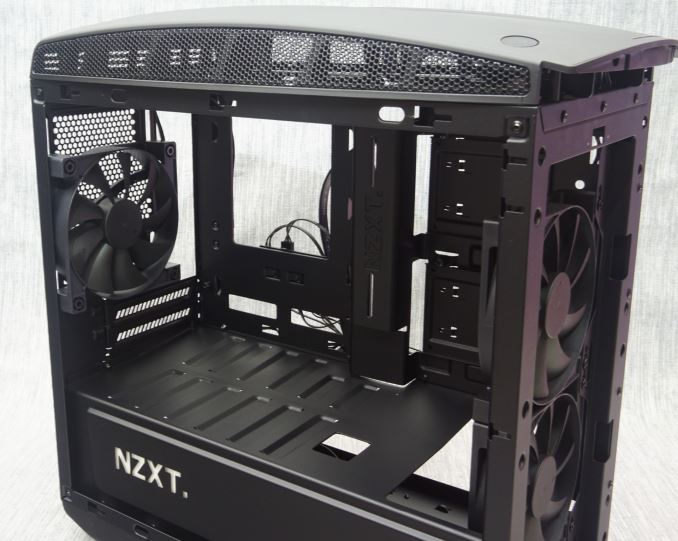
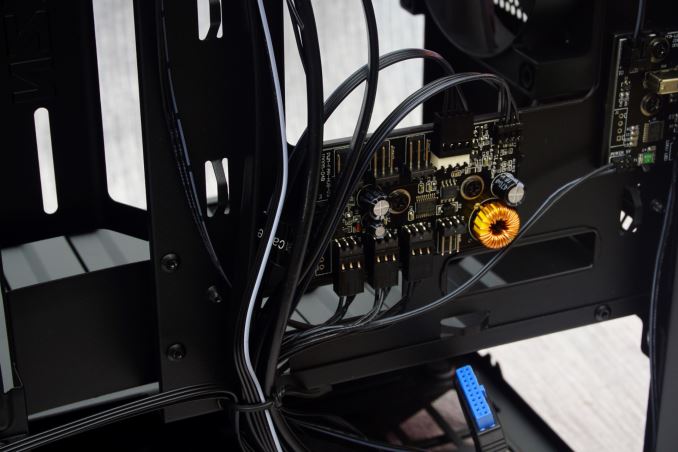
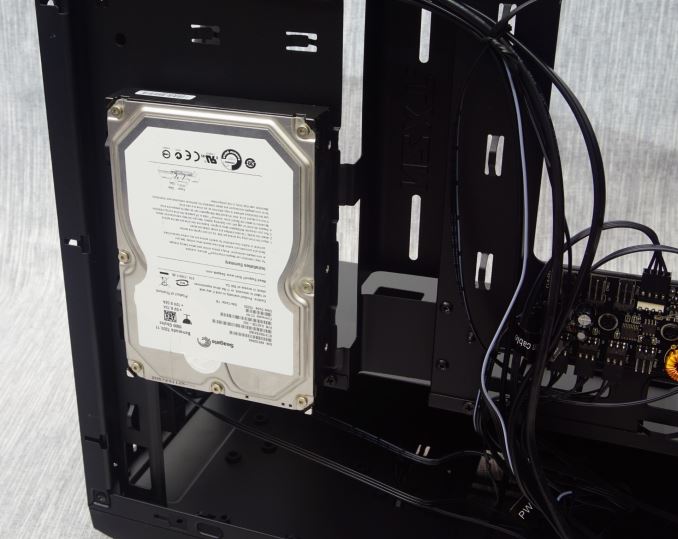
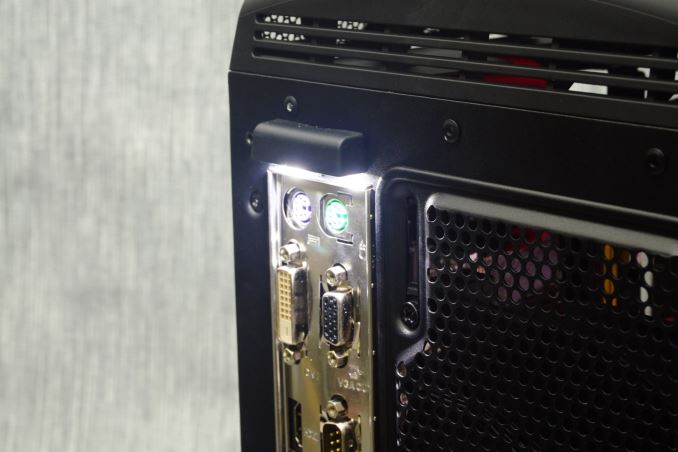
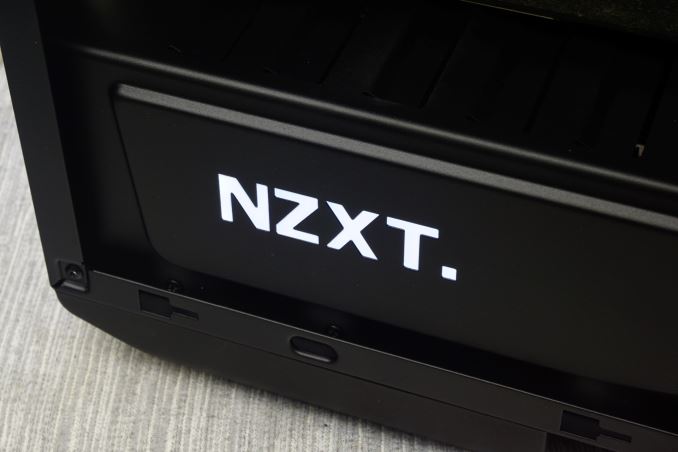
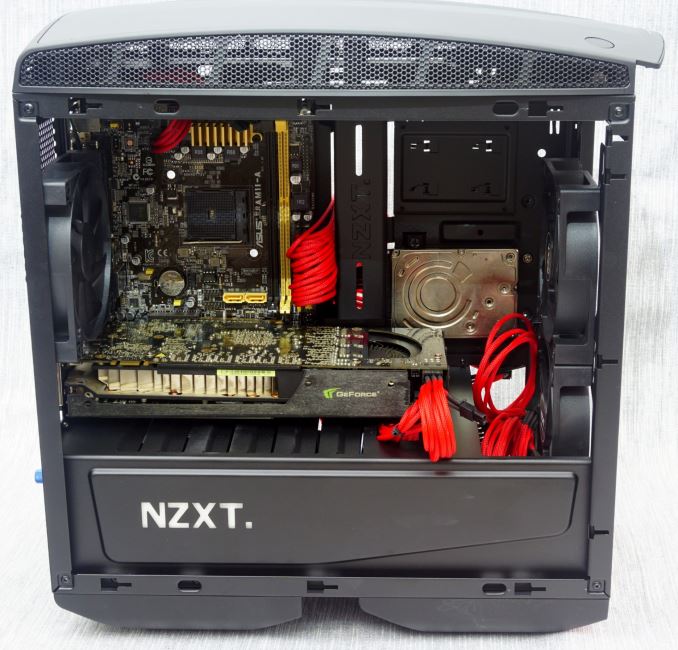
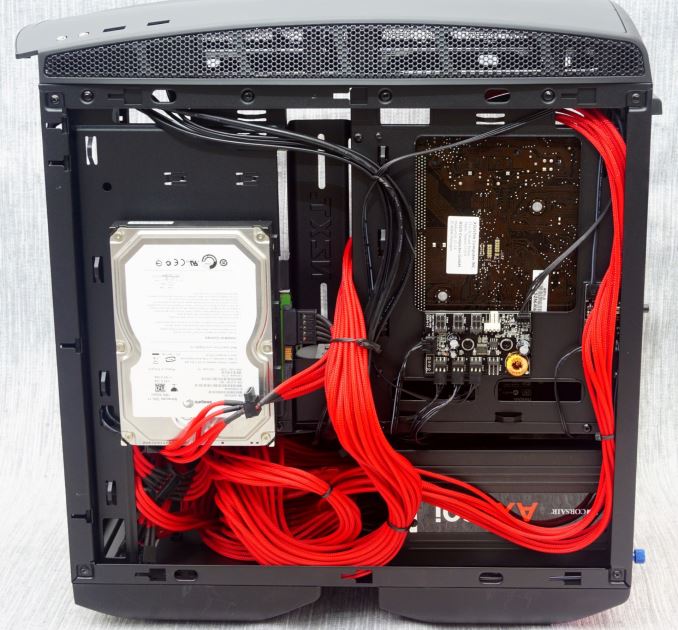








48 Comments
View All Comments
Flunk - Thursday, June 16, 2016 - link
I like the look of this, but it's just too big for a mini-ITX case. It's bigger than NZXT's own S340 full ATX case, which is much more practical.freeskier93 - Thursday, June 16, 2016 - link
I'm really baffled by this, I even pulled out the tape measure to measure my s340 and sure enough, basically the same.Lugaidster - Thursday, June 16, 2016 - link
Manufacturers don't get mITX at all. Anandtech doesn't either, apparently. Here's what enthusiasts look for in SFF cases:- Full-length video card compatibility with full wattage support
- Minimal Size
- Enough cooling for 250W GPU
- Decent cooling (though size is more important) for a maximum of 90W TDP in the CPU
- Low noise
And here's why, enthusiast mITX systems are based on Intel systems for the moment, and with the exception of a very specific X99 Asrock motherboard, all systems use 65W-90W Intel CPUs. Overclocking is secondary to noise and size as long as the system is capable of cooling a powerful enough system.
If the system uses full ATX PSUs it's already too big. Those are not needed for a SFF system even if going for an LGA2011 CPU with a Titan GPU, SFX-L serves the purpose just fine, and SFX does even, if you can bear the noise of the PSU when going full tilt.
Please, review cases that are smaller and give ratings accordingly. This particular case is a mess aesthetically and doesn't serve the purpose of a SFF system.
You should take a look at the Ncase m1 (oldie but goodie) or the Dan a4-sfx for inspiration on what enthusiasts look for in a SFF case.
Taverius - Thursday, June 16, 2016 - link
Mmnope. I have an ax760i psu and a k-series in mine. You don't speak for all of us.Lugaidster - Thursday, June 16, 2016 - link
I'm speaking for the frustration I see in communities of SFF systems when designs like this one appears. I won't post links, but hop around SFF forums in HardForum or more dedicated communities and you'll see what I mean. There's a reason the Ncase M1 has such a huge following despite it's price-tag.There's clearly demand for proper SFF systems that try to push the envelope with regards to the amount of horsepower you can put in the smallest possible enclosure, but manufacturers keep pushing fat cases that don't take advantage of the minimal designs mITX allow while maintaining compatibility with high performance parts.
I complain on this review because the case clearly isn't SFF and because the testing done doesn't reflect the type of components you'd want to put in an enthusiast case: 120W GPU with a 150W CPU is not representative, a 100W CPU (and this actually considers moderate overclock, the i7-4790K is 88W) with a 275W GPU is more like it.
JoeyJoJo123 - Thursday, June 16, 2016 - link
I agree with the sentiment of SFF, the I believe the crux here is that this case isn't targeted for small form factor buyers, even though it's restricted to Mini-ITX.Bear with me. Yes it's a Mini-ITX tower, but no it's not small form factor.
This is really intended for people that:
1) Already know they're never going to need anything more than 1 PCI-E slot for anything.
2) (Most important) Want to have a different case shape than a traditional "box".
As others have noted, this is bigger than some midtower ATX cases on the market, and if a user wanted to spend a limited budget more wisely, they'd get a comparable ATX motherboard (which are typically cheaper than Mini-ITX motherboards) and get a smallish ATX midtower (which could fit even more components than a Manta can and is cheaper). So ultimately, they're really only buying the case for the unique shape.
Lugaidster - Thursday, June 16, 2016 - link
Yes, the case is indeed odd, but the review treats it like a SFF case because it tests for components that supposedly would be on a SFF system, like a 120W GPU (I won't repeat myself on why I think the methodology for SFF reviews is flawed).If this case is indeed nothing more than a small tower, like you say, we should see it being compared against other tower systems with thermals according to that type of systems.
JoeyJoJo123 - Thursday, June 16, 2016 - link
I do agree there.The cases really should be compared, not in terms of motherboard size compatibility, but in terms of case volume. I don't think a case of this kind of volume should be compared to a Node 202, for example, even though both are Mini-ITX cases. The inherent difference of volume speaks to different form factor categories, and therefore different customers.
BrokenCrayons - Thursday, June 16, 2016 - link
[H]'s forum is about the last tech forum I'd submit as a place from which to draw a credible sample. The people there are nice and some are pretty informed, but it has its own community-pervasive distortions.TheinsanegamerN - Friday, June 17, 2016 - link
Some of us are still waiting for the A4-SFX to come out. That thing is gonna be sweet when it finally comes out